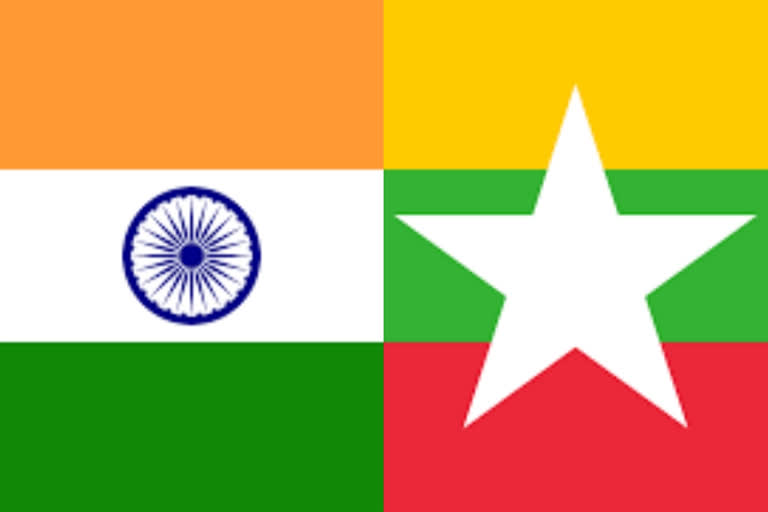New Delhi: India has a lot riding on Myanmar. It is through Myanmar that India seeks access to Indo-China and the Far East with its pivotal ‘Act East Policy’ (AEP). That is why the February 1 coup by the Myanmar military or the ‘Tatmadaw’ should weigh heavy on the Indian mind.
Should it support the ‘Tatmadaw’, voice support for the pro-democracy movement, or waddle along the way it has been doing so for long and watch nonchalantly from the sidelines?
Going by the scale and intensity of protest, the ‘Tatmadaw’ has been caught by surprise and that is why a tough repression of pro-democracy elements is underway even as about 90 people have been gunned down.
Case for India’s Support to Pro Democracy Movement
First, while the media in Myanmar is functioning under tight curbs and very less information is emerging from the country, one can only imagine that the ‘Tatmadaw’ is pitted against the people this time and may find it difficult to sustain its control for long in face of a growing civil disobedience movement and a huge army of mobile-phone wielding citizens. Not to speak of government officials stoic refusal to report for duty.
Second, while global umbrage has poured in, the most critical role is the Chinese position. It is an open secret that the ‘Tatmadaw’ has a very close relationship with the Chinese state. But the moment China decides to back out, the military junta’s days will be numbered.
Also read: Ladakh to Cox’s Bazar: India, China rivalry ekes new arena
Using its proximate position with the ‘Tatmadaw’, China is executing plans to extend its transportation infrastructure right up to the Bay of Bengal. It is therefore important that India has a regime in Naypyidaw that has strategic and ideological similarities and not a regime that is in dalliance with powers that are pitted in a contest with India.
Third, the military junta has a legacy of being tough on the non-Burman minorities in the country. The Indo-Myanmar border region is inhabited by non-Burman ethnicities. Any repression on these ethnic communities has a spillover effect on the bordering states in northeast India.
A case in point is the recent arrival of Chin origin people from Chin state in Myanmar into Mizoram. Chins and Mizos are of the same racial extract. So while Mizos are welcoming Chins, a Union Home ministry directive issued recently from New Delhi asking all immigration from Myanmar to be stopped will raise heckles among Mizos. This lack of ground level sensitivity contributes to disturbing the stability.
So a Naypyidaw regime that is democratic, accessible and inclusive works best for India. As opposed to a regime that will heed China’s directions.
Fourth, India and Myanmar share a 1,468 km long international border that is for the part porous, has a difficult terrain and largely unmanageable. It makes much sense for India to have a democratic country as a neighbour.
Legacy of Friendship
About nine years ago, this correspondent had heard Myanmar’s pro-democracy leader Aung San Suu Kyi speak during an event in New Delhi.
Dressed traditionally in a resplendent yellow ‘eingyi’ (blouse) and a ‘longyi’ (a drape) with yellow roses tucked in her hair, Suu Kyi struck a discordant note on the India’s role when it opted to engage with the military junta in the 1990s.
“I have been asked whether I have been disappointed that India had not stood staunchly by us through the years of struggle for democracy… I was saddened to feel that we had drawn away from India or rather India had drawn away from us during our very difficult days.”
Also read: Amid thawing of Ladakh faceoff, China unleashes info war
“We have not yet achieved the goal of democracy and we are still trying and we hope that... people of India will stand by us and walk by us as we proceed along the path that they were able to proceed down many years before us,” Su Kyi had said.
Since then not much has changed since in the Country of the Golden Pagodas.
Story of Two Uniforms
The close ties between Indian and Myanmar can well be comprehended by what Suu Kyi, who had spent years in Delhi for higher studies, had to say. It was India’s first Prime Minister Jawaharlal Nehru who dressed up Suu Kyi’s father General Aung San when he was on his way to London for talks on Burma’s independence in 1947.
In 1947 when Gen Aung San stopped over in New Delhi, Nehru noticed that Aung San did not have the right clothing for the cold London weather and promptly ordered for two sets of uniform.
Suu Kyi said in her 2012 address: “To my infant mind, he was the kindly old man who had provided my father with two sets of uniform, the smartest he ever possessed.”
And India could do well to consolidate on that goodwill and legacy of friendship with Myanmar.
Also read: Hitting the highway to ‘Aatmanirbharta’ in defence



